LAKE PIGMENTS
Lakes are technically classified as pigments, and are formed by combining a dye with a mordant, which is a metallic salt. The FDA describes lakes as: “Extensions on a substratum of alumina, of a salt prepared from one of the water-soluble straight colors by combining such colors with the basic radical aluminum calcium.” The specific substrate (or “mordant”) FD&C lakes utilize is alumina hydrate. This is the “metallic salt” on which the dye is precipitated or absorbed—forming a lake.
Lakes are often used to color food, drugs and cosmetics. For food coloring, lake pigments are used when other types of food dyes are inefficient. Specifically, when the food at hand lacks the appropriate level of moisture in which other types of dyes can dissolve, lake pigments are often used. Lake pigments are also used for coloring foods containing fats and oils. While both traditional food dyes and lake pigments are both oil insoluble, lakes are oil dispersible. Lakes are commonly used in personal care products such as lipsticks, eye-shadow, nail polishes, lotions and other cosmetics because of their chemical attributes and coloring qualities.
Like other pigments, lakes achieve coloring through the dispersion of the lake particles. Depending on the material being colored, one particular lake may perform much differently than another lake of slightly different chemical composition. For example, in most food and drug applications, lakes that consist of less than 42% dye content perform well. Alternatively, for most plastic applications, lakes of much higher dye concentration perform better.
Here at Pylam, we conduct thorough testing to determine the best possible colorant for any product. Whether it is a lake, another pigment, or a specific dye, we have every possible solution. Contact us to find the perfect color for your product.
Need a Sample
Request a sample below

